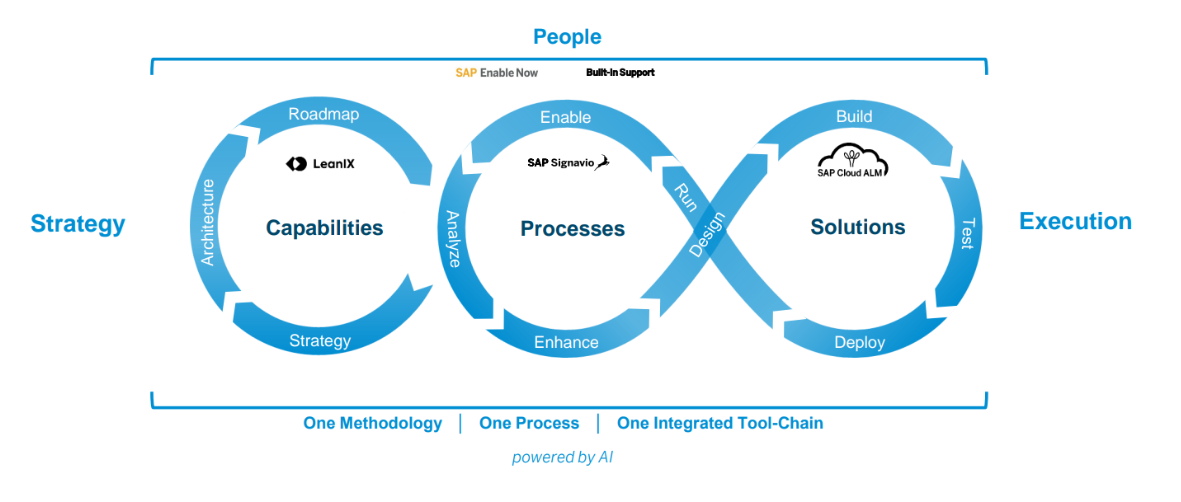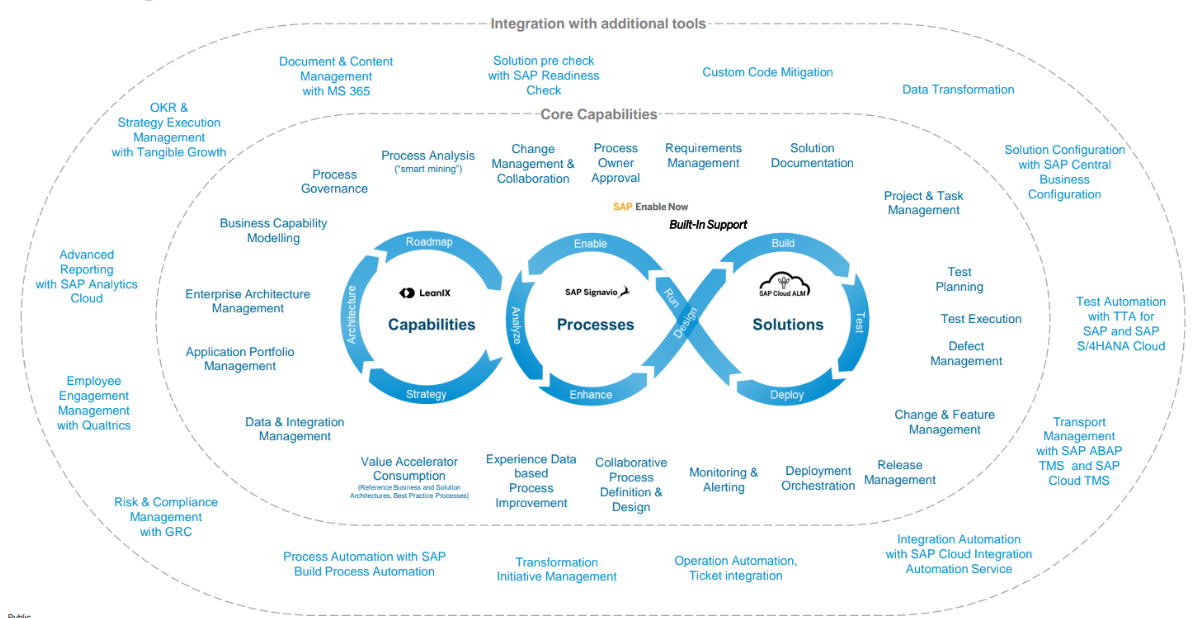SAP Cloud ALM – Much More Than Just ALM?
At present, almost every company is facing mounting challenges as a result of ongoing digitalization. SAP Cloud ALM provides you with an opportunity to manage this growing complexity through its open approach.
The advent of new technologies in an ever-changing economy is providing companies with many opportunities but is not without risk (see also our article "Ensure Your Company's Success with EAM"). Previously, some companies implemented SAP Solution Manager as their tool of choice for application lifecycle management. Now, SAP Solution Manager itself is undergoing change. Official maintenance will cease in 2027 while extended maintenance will continue until 2030. SAP Cloud ALM is ready for take-off, but companies are unsure about how and, above all, when to make the transition. The ALM Summit EMEA 2023 held in Mannheim from 10 October 2023 to 13 October 2023 was the first gauge of current sentiment
What Are the Main Features Offered by SAP Cloud ALM in Combination with SAP Signavio and LeanIX for the Management of SAP Software Projects and Systems?
SAP announced a number of new features in SAP Cloud ALM at the ALM Summit EMEA 2023. Among other things, SAP's is strongly focused on expanding the integration aspects of SAP Cloud ALM. The acquisition of Signavio in 2021, along with recently announced plans to acquire LeanIX, reinforces SAP's strategic intentions. SAP Cloud ALM will not only serve as a signpost for ALM, it will also be integrated into a holistic approach that SAP has entitled the Transformation Suite Approach. This will also clarify how SAP Cloud ALM relates to Enterprise Architecture Management (EAM). The purpose of this approach is to provide a holistic solution from the strategy stage right through to execution.


